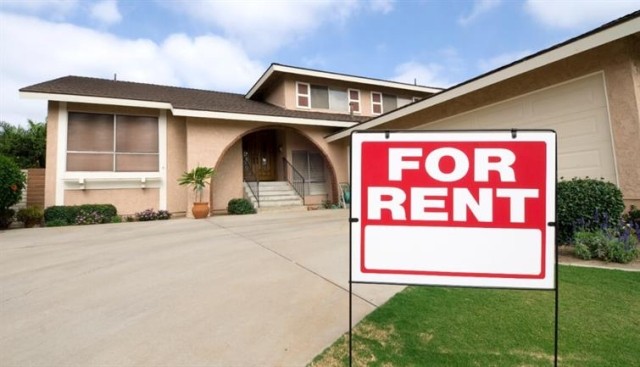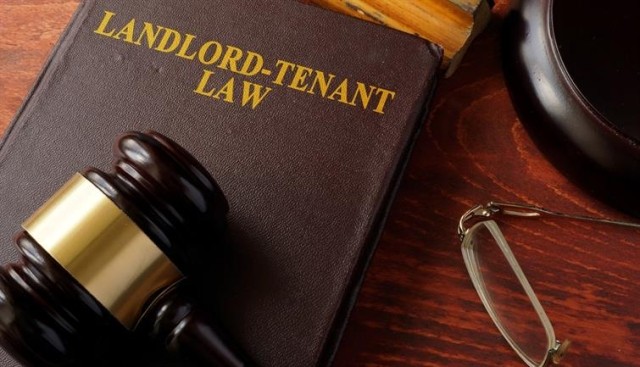More than a third of households in the United States live in rental housing according to the Joint Center for Housing Studies. With about 43 million people across the country signing leases, you can be sure that there are plenty of different types of rental lease agreements out there to accommodate renters. While having different types of residential leases is beneficial, as a renter, you need to know which one works best for you. Before you navigate through the lease your landlord provides, you need to understand what leases are available and decide which one works best for you.
What's the Difference Between Leasing and Renting?
Many renters use the words renting and leasing interchangeably, but they do not mean the same thing. Both renting and leasing require the tenant to sign a legally binding residential lease agreement in which tenants and landlords agree on things like the length of tenancy, rules, and rent price. The difference between renting and leasing is the length of tenancy. It’s considered leasing when the tenant signs a lease for at least a year. A rental agreement is usually short term, such as renting month-to-month. In both cases, you’re still a renter. You have to follow the rules and pay a certain rent price. If you sign a lease agreement, you're accepting the entire duration of the lease, which is usually 12-14 months. If you sign a rental agreement, you agree to a month of tenancy.
Gross Lease vs. Net Lease
In terms of payment, there are two types of leases: gross lease and net lease. A gross lease, or a full-service lease, is the most common type of lease. A gross lease has a predetermined rent that covers costs associated with owning the property, including things like tax, building insurance, and maintenance. If you have a gross lease, you pay rent, and your landlord worries about maintaining the property.
A net lease has a set rent price that only covers your tenancy, and additional property costs are not included in that rate but billed separately. The set rent price is lower than it would be in a gross lease, but tenants have monthly fees for things like property tax, insurance, and any maintenance work.
While the monthly rent price for a gross lease may be higher than it would be for a net lease, you can budget easier because the monthly bill is the same. A net lease has a lower cost, and you pay for things as you need it. For example, in a gross lease, you’re paying for maintenance whether you use it or not because the price of maintenance is factored into your rent. In a net lease, you wouldn’t have that factored into your rent. If you don’t need to make a maintenance request, you won’t be charged.
If you’re unsure of which lease you have, ask your landlord before you sign it. Net and gross leases cover different things. Make sure you read your lease and clarify with your landlord what you are responsible for paying and how you will be billed — everything you will be billed for needs to be outlined in the lease.
Fixed-Term Leases
A fixed-term lease is the most traditional lease. They’re called fixed term because tenants and landlords are agreeing to abide by the lease for a fixed amount of time, normally six to 14 months. These leases should have the lease start and end date clearly labeled near the top of the lease. Once you and your landlord sign the lease, it can’t be changed during the dates specified, including things like rent amount and rules. You are also not usually allowed to break the lease early and your landlord cannot cancel the lease early (unless they have a just cause).
Fixed-term leases are great for people who know they will stay in the same place for a while. These leases also offer security because the rent price won’t fluctuate month after month, and you don’t have to worry about your landlord not renewing your lease like you would in a month-to-month.
The main issue with fixed-term leases is that they are almost impossible to break without penalty. If you find out that you need to move before your lease end date, it could be quite costly. Sometimes, landlords will let you pay a few months’ rent to break the lease, and some may allow you to find a subtenant, but in most cases, breaking a fixed-term lease isn’t easy.
Month-to-Month Leases
A month-to-month lease, also known as a periodic lease or a short-term apartment lease, is a rental lease agreement that typically lasts for 30 days. As long as proper notice is given, your landlord can change the terms of the rental agreement. This means that they don’t have to renew your lease. They can change your rental price or change certain rules as long as notice is given. Your state laws outline the length of proper notice.
A month-to-month apartment lease agreement is a good option for people who need temporary housing because you can cancel your lease if you give your landlord notice. The downside to a short-term apartment lease agreement is that while it allows you the freedom to cancel your lease, it allows your landlord the same thing. If notice is given, your landlord does not have to renew your rental agreement. The other main issue with a month-to-month lease is that your landlord can change the price of rent at any time with proper notice.
Both lease types have pros and cons for renters to consider. Before you sign a lease, make sure you take note of the lease start and end dates. Know that leases are legal documents, so once you sign, you are agreeing to the terms.
Joint Leases
A joint lease is an important term to understand for those leasing with roommates. In a joint lease, you and your roommate(s) sign the lease together, therefore agreeing to the terms of the lease. You are each responsible for following rules and paying rent together. Typically, landlords will put all money owed in the same bill. Even if you contribute your share, you could still be evicted if your roommate doesn’t give you the remaining rent. How you split costs up is between you and your roommates to decide and enforce. Your landlord will want the entire amount, and often will have clauses in the lease stating that they don’t get involved in roommate disagreements and disputes.
The benefits of a joint lease are that you can share the financial responsibilities with another person. If you have a joint lease with a trusted person, it can help build your credit score and rental history. The issues with a joint lease arise if your roommate is not reliable. Be careful when choosing a roommate, and ask your landlord to run a background check on everyone you’re renting with. This will unveil things like bad credit and past evictions.
Subleases
A sublease is when a tenant leases their rental property to a third party, with their landlord’s permission. Landlords handle subleases in different ways. Some landlords aren’t really involved in the process. They might leave it up to you to find a subtenant and make a contract. Then, they add the addendum to the lease and run a background check on the person subleasing. Other landlords may be more involved and have a specific process that they follow. In either case, the name of the original leaseholder remains on the lease. If your subtenant doesn’t make a payment or refuses to pay for damages, then you will be held responsible. When you get a subtenant, think of yourself as a cosigner. If they fail to pay, your landlord will look to you for the money owed.
A lease takeover, which is different than a regular sublease, is when you are no longer responsible for the property. The new tenant completely takes over your lease for the remainder of the time.
Whether your landlord allows subleases or lease takeovers is up to state laws and their discretion. Your lease should state whether sublets are allowed and outline the process if they do. Make sure that your lease follows your state's laws on subleasing.
Lease Cosigner Agreement
A cosigner agreement is an addendum added to a lease where another person agrees to take financial responsibility for the property in the event that the tenant doesn’t make payments.
There are a lot of benefits to having a cosigner. If you have no or low credit, a cosigner can help you build up your credit and rental history. They are also good for people with evictions as it gives your landlord extra assurance while it helps you rebuild your rental and credit history.
You’ll want to make sure you have a reliable cosigner. If you fall short on payments, you will want them to follow through with their end of the deal. If they fail to make payments, you and your cosigner could end up with an eviction.
Residential lease agreements can get confusing and involve hard-to-read legal jargon, but it’s important to know what lease you have and what it will mean for you before you sign it. If you have a question about anything, ask your landlord to clarify and double-check your state laws to make sure they’re following accordingly. Once you understand the basic lease types, you’ll be on your way to understanding how to read your lease and becoming an informed and educated renter.






